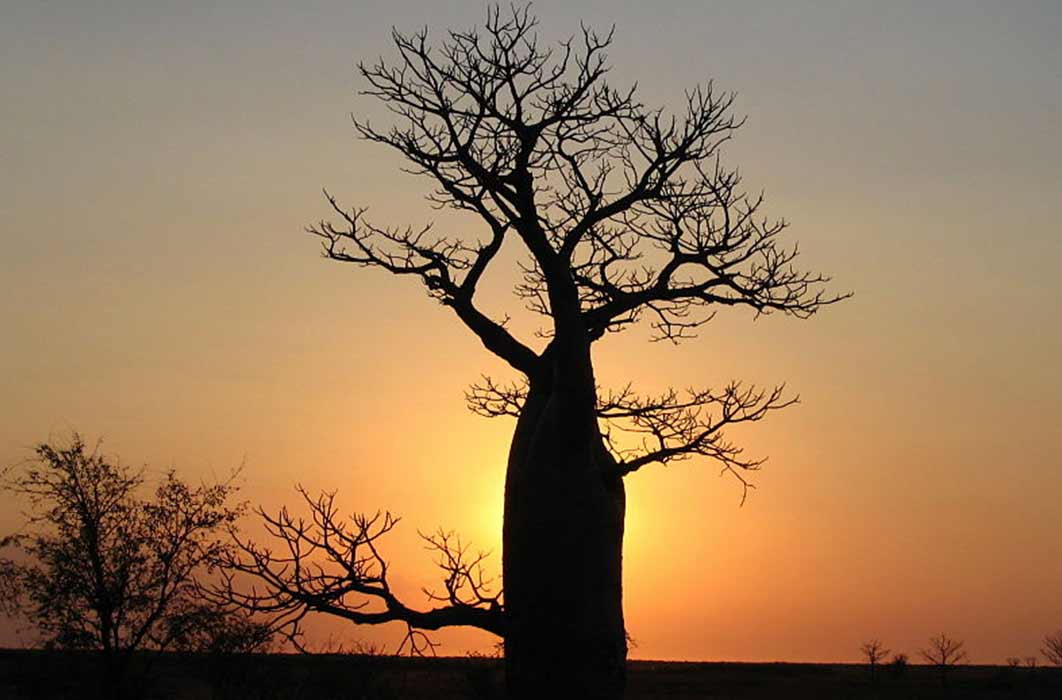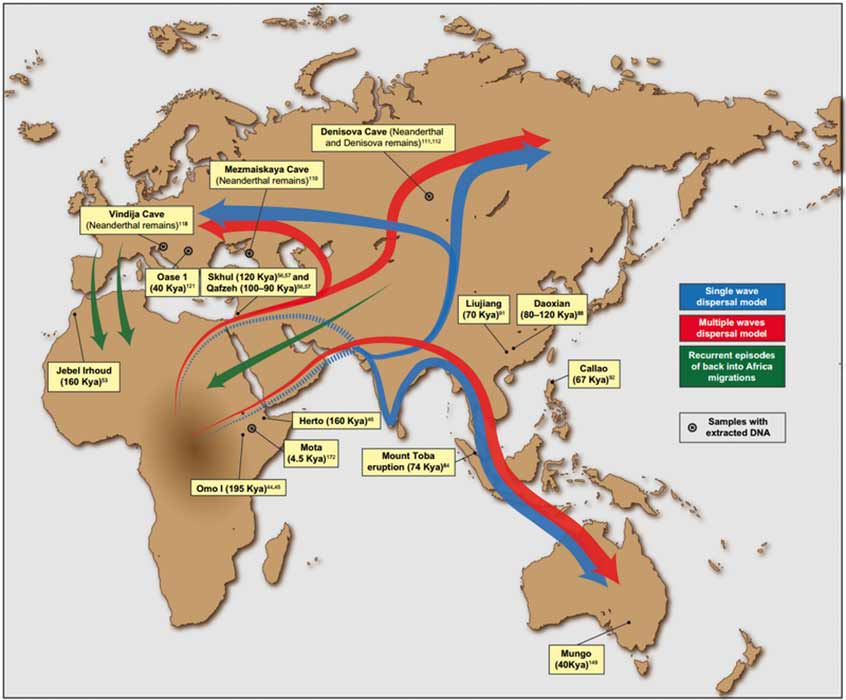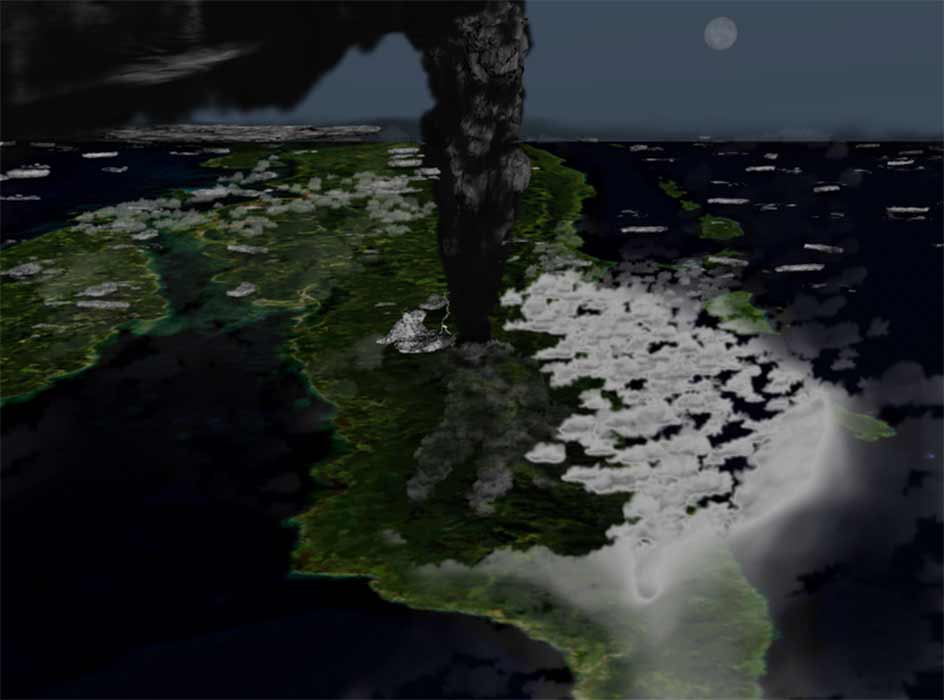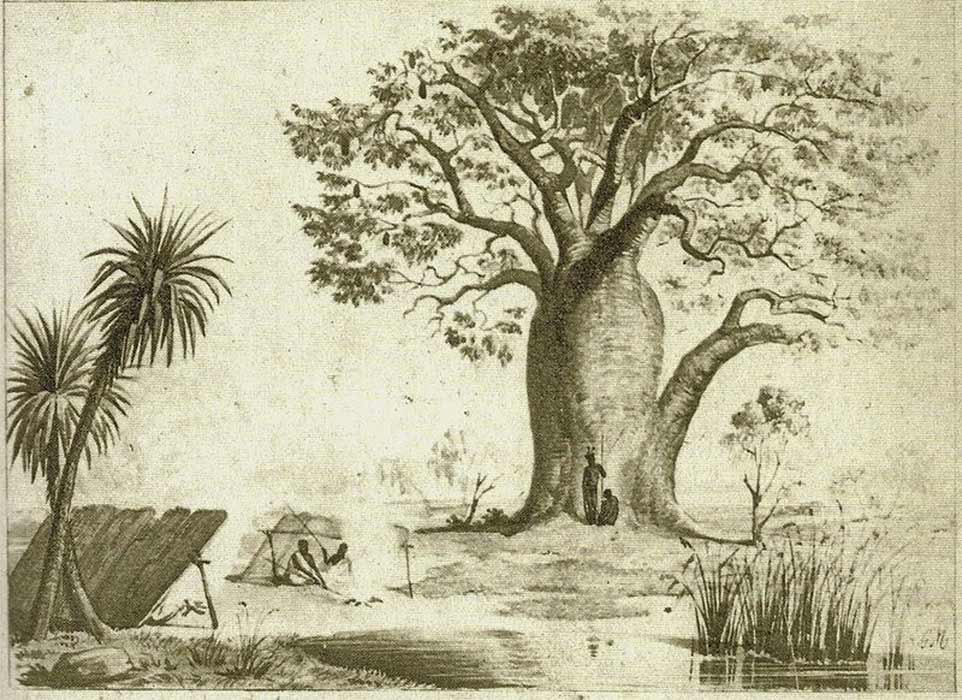
Australia’s Enigmatic Boab Tree Seeding The Out-Of-Australia-Theory
The Out of Africa Theory is the dominant - though not only - model for the geographic origins and subsequent migration of modern humans. While it has been tweaked over time to generally now encompass multiple migrations from the African continent, the arguably most significant of these migrations under the theory is thought to have taken place some 70,000 years ago. In this migration, modern humans left Africa, crossing the southern coast of Asia before ultimately arriving at and settling in Australia from around 65,000 years ago. It is a popular theory. But it remains that – a theory (indeed, there is disagreement even amongst its advocates as to these dates). Amongst other models proposed, there is one that turns this theory completely on its head. What if it was not to Australia that these modern humans migrated, but from Australia? Out of Australia and into Africa!

Putative migration waves out of Africa and back migrations into the continent, as well as the locations of major ancient human remains and archeological sites (López et al.2015)(CC BY-SA 3.0)
Out of Australia
Authors such as Bruce Fenton and Steve and Evan Strong have in recent years developed persuasive grounds, both genetic and archaeological, for the theory that modern humans migrated from Australia some 70,000 years ago. As these authors note, there are multiple sites and artifacts in Australia which suggest that humans may well have been there at least tens of thousands of years before this migration. Indeed, many indigenous Australians believe that their ancestors have been on the continent from ‘time immemorial’.

Illustration of what the Toba eruption might have looked like around 42 km above northern Sumatra. (anynobody/ CC BY-SA 4.0)
The Strongs also point to the impact of the Toba eruption 74,000 years ago on Sumatra in Indonesia, the largest volcanic eruption in the past two million years. Due to the prevailing winds, this disaster has been suggested to have severely impacted both Asia and Europe (possibly even reducing the modern human population to just a few thousand individuals worldwide), while leaving Australia (and equatorial and southern Africa) largely unaffected.
The Strongs postulate that following this it would be from Australia that people would have set sail in search of new horizons. This thesis is consistent with that also put forward by Fenton. He similarly details genetic and archaeological evidence of humans leaving the Australasian continent in the millennia following the Toba eruption, and in particular points to evidence supporting an ingression of humans into Africa around 73,000 years ago. His thesis is that these peoples moved away from the Toba devastation, either deeper into Australasia or in some cases using watercraft to travel away by sea, hugging the Asian coastline or utilizing the westerly currents to island hop to the African east coast.

Baobab or Adansonia Gregorii, after a drawing by Baines. In the foreground Pandanus Spiralis and Aborigenes hardening the tips of their spears in hot ash. (1857) (Public Domain)





